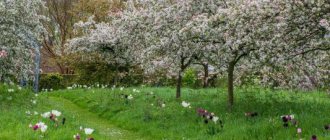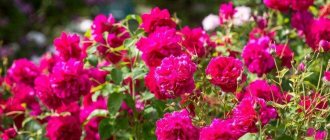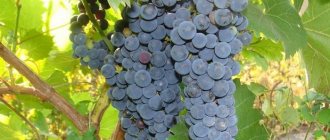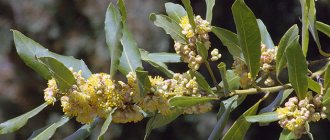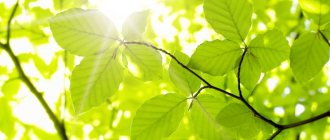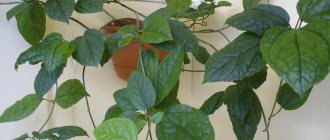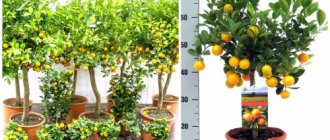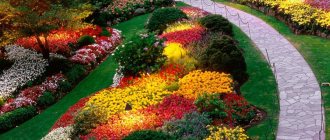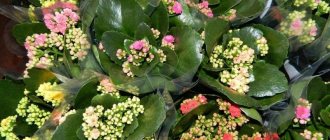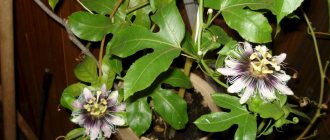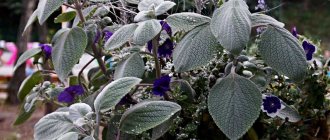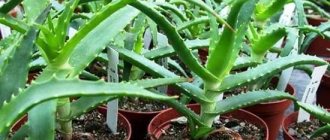The autumn garden leaves no one indifferent. Before the onset of cold weather, trees and shrubs play with bright colors not only thanks to multi-colored leaves. Some crops have no less attractive fruits, with which the branches are densely strewn.
Most trees and shrubs bear fruit in early autumn, but some crops retain bright berries until winter. We have prepared for you a selection of the most attractive plants that are ideal as autumn garden decor.
Barberry
Among the barberries there are deciduous, evergreen and semi-evergreen plants. Common barberries, Ottawa barberries, Siberian barberries, Amur barberries and Thunberg barberries are especially popular in the autumn garden. They have decorative leaves, flowers and fruits. In autumn, the bright red berries of barberry look great against the background of yellow, orange, red, green leaves of this ornamental plant. Often the fruits remain on the branches even in winter.
- 10 varieties of barberry that will decorate your garden
Bright, prickly, with delicious berries - all this is barberry! Which variety will decorate your garden and delight you all season long?
By planting barberry bushes, you can create beautiful hedges. The plant also looks great in the autumn garden as a bright tapeworm on the lawn.
Euonymus
Euonymus does not require formative pruning, so it is ideal for beginner gardeners. This undemanding plant does not particularly stand out in the summer, but in the fall it changes into a bright outfit in shades of pink, red and purple. In addition, beautiful autumn leaves complement the unusually shaped fruits.
- Euonymus Fortune
The most elegant and very frost-resistant euonymus, which decorates the garden all year round thanks to its variegated leaves.
- European Euonymus Red Cascade
One of the best autumn-winter decorations for your garden.
Hawthorn
These small trees or tall shrubs delight gardeners with edible fruits in the fall. Depending on the variety, they are yellow, whitish, orange, brown, purple, black, but the most common are bright red. They are shaped like small apples. The fruits remain on the plant until birds peck them.
Hawthorn is most often used in landscape design as a hedge; single trees also look good in the garden.
- Creating a hawthorn hedge
Basic rules for creating a hawthorn hedge.
Classification of berries
All berries are usually classified into several broad groups:
- Real or proper berries.
- Stone fruits.
- False.
- Berry-shaped or complex fruits.
- Poisonous.
In addition to the main classifications, many others can be distinguished. For example, all berries are divided into two broad classes: wild and cultivated, edible and inedible. It is also possible to highlight certain differences that include the shape of the fruit, their color, ripening time, etc.
In general , it is worth taking into account that even in the scientific community there is a lot of controversy about whether this or that fruit is a berry or a fruit.
For example, strawberries and wild strawberries are officially classified as berries, but there is an opinion that these fruits are generally closer in all characteristics to fruits or, in some versions, to nuts (!). Or take the same raspberries. Thanks to the pedicel, it looks more like a berry. But based on the shape of the fruit, it is classified as a multi-drupe, that is, complex fruits that are closer to fruits. By all indications, even oranges and lemons are berries, but avocados are already the most fruit.
Elder
In May-June, elderberry decorates the garden with numerous inflorescences, and at the end of August, fruits form in place of the flowers. The red elderberry, as you might guess, is red, the black elderberry is blackish-purple, and the Canadian elderberry is dark purple. Red fruits fit more organically into the autumn garden palette, but they are inedible, unlike dark berries.
- Black elderberry Black Tower
A column-like tall shrub with fragrant inflorescences and bright berries, from which you just can’t take your eyes off all season.
Elderberry of any type and variety is good both as a “soloist” and as a participant in an attractive composition in the vicinity of other ornamental shrubs.
List of berries - different types
Berries are a favorite food on the table at any time. The sweet, pleasant aroma of berries beckons. Here are the names of berries that will make your mouth water, but you will hear some names of berries only for the first time.
Did you know?
- Strawberries are not actually a berry! It is a fruit that has about 200 seeds on the outside.
- Blueberries are believed to improve vision.
- Pineapple is a berry that will ripen faster if placed upside down.
- Fresh or dried raspberry leaves are used as an herbal tea to regulate the menstrual cycle.
- By eating grapes in the morning, you can lose an average of 1.5 kilograms.
- Tomatoes are not vegetables, but fruits. Plus, they're berries too!
You will come across some amazing berry names on the list that are actually berries. You may be confused, but some fruit names are not berries. The fine line that separates these fruits is a classification defined in botany.
In this article, “edible wild berries,” we offer a more detailed look at the berries. And in this article you can familiarize yourself with the List of fruit names with photos. In this article you can already familiarize yourself with What fruits are and types of fruits.
How is the term berry understood in botany? Berries are fruits that have internal pulp, edible peel, and pericarp produced from a single ovary. In other words, it is one ovary with pulp that grows in a juicy fruit, and there is no barrier between the seeds and the pulp on which these seeds feed.
Layman's understanding of berries: All small, juicy, colored fruits with pulp are berries.
List of berries.
Proper Berries: These meet the botanical definition of a berry. Therefore they are real berries.
Barberry : Barberry fruits are small berries, red or dark blue in color. Barberries are long and narrow fruits. They are used to make jams and tinctures. They are rich in vitamin C.
Elderberry : They have antioxidant properties that reduce cholesterol, improve vision, strengthen the immune system, and also eliminate heart problems, coughs, colds, flu, bacterial and viral infections, tonsillitis. Many other products are also added to ice cream: cocktails, jams, semi-finished products, muffins and syrups.
Grapes : Grapes contain vitamins A, C, and B6. They also contain potassium, calcium, magnesium and folic acid.
Honeysuckle : They are rich in calcium, magnesium, potassium, vitamin C and quercetin (an acid that fights free radicals). Honeysuckle has been used in Chinese folk medicine for centuries. There are some poisonous varieties of honeysuckle. Therefore, it is better to buy honeysuckle in a store than to pick it in nature. You can read about honeysuckle juice here.
Viburnum viburnum : These berries can be eaten raw or processed. Once picked from the tree, they spoil quickly and can only be stored for 3 days in the refrigerator, or must be frozen, canned or dried. All parts of the plant are used in medicine.
Redcurrants : These are small, round red or white berries that are used to make jam, pies and salads. They contain a lot of vitamin C, iron, potassium and dietary fiber.
Gooseberries : These are small round berries that are striped in color. Unripe fruits are green in color, while ripe ones are pink to yellow.
Mahonia holly ( Oregon grape ): They look like grapes and are blue or purple in color. They look like they are covered in powder. They are known to be anti-inflammatory and antibacterial in nature.
Sea Buckthorn : These orange berries are about the size of grapes. They are rich in antioxidants and vitamins, which help reduce weight and protect against dementia.
Podofil : Podofil grows wild, mainly in the forest. Most podophila do not bear fruit and have only one leaf. Those that bear fruit have 2 leaves and only one flower, which then turns into a fruit. In the budding phase, the fruits are green, hard and poisonous. However, it gradually turns yellow and becomes soft, and when ripe it has a pleasant taste.
Tomato : This is a common fruit and vegetable in the human diet, classified botanically as a berry. Tomatoes are the most common fruit in garden plots.
Currants : These are red, green, yellow or black berries. They were dried and used as raisins.
Blackcurrants : These are popular aromatic berries similar in appearance to red currants. I use them to make jams, pies, ice cream, cakes, etc. Blackcurrants contain vitamin C. The berries also contain potassium, phosphorus, iron and vitamin B5.
Rose hips : These are red oval berries, also known as wild rose. They are the pome fruits of the rose. Berries are rich in vitamin C.
Drupes: They have a tough skin and only one seed inside. They are also called stone fruits.
Chokeberry : There are two types of chokeberry, chokeberry and red rowan. Purple chokeberry is a hybrid of the above listed berries. The berries are used to make juices, jams, etc. They are also used as a flavoring and coloring agent. The berries are high in vitamin C and antioxidants.
Acai : These small, round black berries are Brazil's largest cash crop. They are used to make juices, cocktails and various other drinks. These berries are known for their antioxidant properties.
Barbados cherry ( Acerola , Acerola cherry , Malpighia glabra ): This berry is native to the West Indies and Central America. The juice of these berries is also popular in the West Indies, just like orange juice in America. The vitamin C content in this berry is almost 65 times more than in an orange!
Dereza vulgaris ( goji berries ): Externally, the berries look like dried and shriveled berries. They are also called wolfberries. They are usually cooked before consumption. They are used to prepare herbal tea, wine, rice water, Goji juice, etc. They contain 11 essential and 22 trace dietary minerals, 18 amino acids, 6 essential vitamins, carbohydrates, proteins, fats, dietary fiber, etc.
Serviceberry : The berries have large seeds covered with a hardened crust. Ripe berries are red or purple in color. They are mainly eaten by birds. The berries are sweet.
Canadian Pride : These are seasonal pitted berries that are blue-black in color. They are food for birds and animals.
Hackberry Tree Fruit : Winter fruit turns red or orange when ripe. Although the fruits are edible, they are rarely used in food. However, they are happily eaten by wild birds and animals, who eat them throughout the winter.
Persimmons : They are not considered berries, but in fact they are according to the botanical classification. Persimmons are red or orange in color. Contains glucose and protein. Persimmon is used in medicine.
Bird cherry : Unripe red berries have a sour, astringent taste. Ripe berries are dark in color and not very tart in taste. The berries are used to make jelly, jam and syrup. They require a lot of sugar or sweetener to preserve.
Emleria : The berries are oval green and hard when ripe and subsequently turn reddish, while ripe berries are black-purple in color.
Suprapistillate berries (false berries): These develop from the inferior ovary, unlike true berries, which develop from the superior ovary.
Lingonberries : Lingonberries are used to make jam, juice, syrup, compote, sauce, etc. Lingonberries are rich in vitamin C, provitamin A, vitamin B (B1, B2, B3), potassium, calcium, magnesium and phosphorus.
Crowberry : These dry black berries are very similar to blueberries in appearance and taste. They are used as a natural food coloring. Native Americans use them to cure sore eyes. They contain few vitamins and a lot of water.
Cranberries : The berries are white when unripe and red when ripe. They are used to make juice, sauce, wine, etc. Eating cranberries in large quantities is very good for health. The berries contain high levels of vitamin C, fiber, mineral salts and manganese.
Bearberry : Brown-red berries. The berries have many medicinal properties. Herbal tea from bearberry is used in the treatment of nephritis.
Blueberries : The berries are dark blue or purple in color. They are used in jams, purees, juices, pies and muffins. They contain high levels of antioxidants and can help prevent the development of many diseases. For example, diseases of the stomach, heart, dystrophy.
Juniper Berries : They are green in color when not yet ripe and ripe berries are purple-black in color.
Fruits: These are berry-shaped fruits. However, they do not develop from a single ovary like true berries. Many ovaries from one or more flowers unite into one, making up a berry-like fruit.
Boysenberries : These berries are burgundy-colored, shiny, large, juicy berries that are a hybrid between raspberries, blackberries, and loganberries. They are added to pies and pies.
Waxberry : The birthplace of the berries is China. The berries are dark red in color. These berries can be eaten or used to make jam, pickles, wine and juice.
Blackberry : This berry is the most common in the UK. These are small, dark, purple berries that are the main ingredient in jams and pies. Berries contain a lot of vitamin C.
Blackberries : They are part of the blackberry family and are sweeter than blackberries. Unripe berries are dark red in color, while ripe ones are dark purple. However, the striking feature is that the male and female plants grow separately.
Irga : These are red berries, ripe black and blue. They are similar in size to blueberries. They are used to make jams, muffins, etc.
Serviceberry : These are sweet berries that are used to make pies and preserves.
Serviceberry : This berry is native to Canada and is very similar in appearance to blueberries. The berries are rich in vitamin C, manganese, magnesium, iron, calcium, potassium, copper and carotene.
Strawberry : This is the most popular fruit all over the world. Strawberries are used to make various culinary dishes, jams, ice cream, sauces, pies, cakes, milkshakes, etc. Strawberries contain high levels of vitamin C, manganese and folic acid.
Loganberry : These are ruby red, sweet, juicy berries. They are used in making juices. Berries contain vitamin C, calcium, iron, potassium, fiber and carbohydrates.
Raspberries : These are small red berries that ripen in summer or fall. They are used to make jam, jellies, pies and ice cream. They contain a lot of vitamin C, manganese, vitamin K and magnesium.
Fragrant raspberry : The berries are red. These fruits are so fragile that they can break when you pick them up.
Purple raspberries : These are red or orange berries. Contrary to their name, they are not suitable for wine production due to their astringency.
Cloudberry : Ripe berries have a pleasant taste and color ranging from yellow to orange-red. They are used to make jams, sweets, marmalade and wine. Native Americans eat these berries with dried red caviar, hence the name Salmonberries.
Mulberries : These berries are red, purple and black in color. The berries are used to make pies, cakes, liqueurs and jams.
Marionberry ( marion berry ): This is a hybrid. They are darker than blackberries and are used to make pies, cakes, ice cream and jellies.
Olallieberries : These berries are found primarily in California. They are rich in vitamin C and fiber, which are beneficial in reducing the risk of cancer.
Youngberry Large : Sweet reddish black berry, a hybrid of blackberry and blackcurrant. They ripen 2 weeks earlier than blackberries. The berries are rich in vitamins A, C and B1, calcium, and cellulose.
Poison Berries: These berries fit the botanical description of berries, and some just look like berries. These are poisonous berries that should not be eaten.
Wolfberry (Wolf Bast) : The berries of this plant have a fragrant odor and are poisonous. They come from Eurasia, North Africa and Australia.
Woronets : The berries grow on flowering herbaceous plants belonging to the ranunculaceae family. Poisonous berries contain a cardiogenic toxin. These toxins affect the cardiac muscle tissue, leading to cardiac arrest and death.
Blackberry : These large berries are white in color and have a black mark that resembles an eye. The berries are very poisonous. In English the berries are called Doll's Eyes Berries.
Lakonos ( phytolacca ): These dark purple berries are poisonous to humans, but birds eat them. Two species of this plant grow in Russia.
Lily of the valley : This plant is completely poisonous due to the convallatoxin it contains. In Russia, it is distributed in the European part, the Mountainous Crimea, Transbaikalia, the Amur region, Primorye, Sakhalin and the Kuril Islands.
Ligustrum ( privet ): The berries of this plant are poisonous and black in color. One species grows in the south of Russia. The flowers of this plant are purple.
False pepper nightshade ( Jerusalem cherry) : Yati berries are poisonous and are often confused with tomatoes. Like many introduced plants and fruits to Australia, nightshade has become an invasive weed there.
Holly berries : These red berries are used as ornamental. If ingested, they can cause vomiting and diarrhea.
Yew Berries : These red or blue berries contain poisonous seeds. In case of survival necessity, consume these berries without seeds.
Such a huge selection of berries allows you to enjoy them to a sufficient extent. However, be careful when you are in nature and want to pick an unknown berry hanging on bushes and plants, it can be a very poisonous berry. This is the end of the list of berries, please add any unmentioned names of berries in the comments!
Derain
Derain bears fruit with small white berries in August-September, but this plant also has decorative bright leaves and shoots in the fall. Thanks to the fiery stems (especially in young specimens), both white and red turf remain attractive throughout the winter.
- Derain red
A bright deciduous shrub with a spreading crown and shoots of various colors - from light green (spring) to blood red (autumn).
- Derain white
A common ornamental shrub with attractive leaves and bright shoots.
Derain looks best in hedges or planted in small groups. The shrub tolerates pruning well, practically does not get sick and is not susceptible to attack by pests, so it is suitable for inexperienced and lazy gardeners.
Evergreen flowering shrubs
In this article we will tell you about the most popular and common types of shrubs among summer residents with photos and names.
ARBUTUS
The Russian name is strawberry tree, strawberry. A slow-growing shrub that simultaneously bears hanging flowers and strawberry-like fruits on the plant in late autumn - these fruits are tasteless. The popular large-fruited strawberry reaches a height of 2 m. Its flowers are white. Flowering time: October - December
Evergreen shrub-Trachycarpus
Blooms in June, loves sunny areas. The plant is hardy, able to withstand winter frosts in many regions, but requires protection from gusts of icy winds.
Huge inflorescences form in early summer, individual specimens grow up to three meters in height, the width of the leaves is up to one meter.
Mahonia holly
Mahonia holly is an ornamental evergreen shrub up to 4 m high. This plant grows best in shade or partial shade. Young leaves of Mahonia have an orange-green color, which in winter becomes the color of dark copper.
Tolerates cold well and reproduces by seeds.
This shrub blooms very beautifully with small yellow flowers collected in caps. Many sources attribute this species to the genus Barberry under the name Berberis aquifolium
Holly is an evergreen shrub
A symbol of Christmas, it is what is traditionally used to decorate houses during the winter holidays. Holly is an evergreen shrub that blooms from October to December and tolerates shade easily, but is not a shade-loving plant. The greatest contrast of colors of this plant appears in the sun.
Holly is especially beautiful in winter, when bushes with bright green leaves and beads of red, white, yellow, black and orange berries stand out clearly in the snow, which remain on the bushes all winter.
Iberis evergreen
This is a branched, low evergreen shrub with small, dense and narrow green leaves. The plant loves light and blooms with white flowers in the month of May.
Iberis Photos
Camellia
It is an evergreen shrub and has dense, glossy dark green foliage. It blooms extremely beautifully, forming inflorescences similar to roses.
Photos of Camellia
But the value of this evergreen shrub is that its flowering begins... in the fall and lasts up to three months.
Boxwood – BUXUS
Boxwood tolerates wind, alkaline soils and some shade. The stems can be trimmed regularly. Boxwood is an evergreen shrub that will grow up to 3m if left unpruned.
The boxwood variety "Aureovariegata" has leaves covered with yellow spots; "Suffruticosa" is a dwarf. Propagated by cuttings under glass in summer. Russian names for boxwood are bux, green tree, gevan, bukshpan, shamshit
Choisie
Choisia is a rounded evergreen shrub with a densely leafy crown all year round. Flat clusters of waxy flowers appear in spring—both leaves and flowers are fragrant.
Choisie Photos
Choisia trifoliate - 2 m high. Flowering time: April - May. Location: sunny or slightly shady. Reproduction: cuttings under glass in summer.
Callistemon
Callistemon blooms in the first two summer months. It is recommended to plant in places well lit by the sun. Propagated by cuttings planted in the summer under a glass canopy.
The flowering is small, the stamens protrude in densely collected cylindrical inflorescences. Usually planted on the side of the site facing the sun. The flowering is dark pink, the foliage is long. The height of the lemon-yellow callistemon can reach two meters, and the hard callistemon - only one and a half meters, but it is famous for its endurance.
Video - Evergreens in the garden
Winter garden with evergreens
In winter, a garden can be kept green and beautiful with the help of evergreen shrubs and trees that retain their foliage and color during cold days. Some retain fruit.
Kalina
In spring, viburnum delights the eye thanks to its large snow-white inflorescences, and in autumn the shrub fascinates with its bright leaves and red berries. By the way, there are species with pink, orange, black, and bluish-blue fruits, but they are not popular in our latitudes. In the middle zone, viburnum is most often grown. The tasty and healthy bright red berries of this plant ripen in August-September. However, the fruits are harvested only after the first frost, then their taste becomes less tart and not so bitter.
- Decorative viburnum - the best varieties, tips for planting, care and pruning
Everything you wanted to know about decorative viburnum and one of its species - folded viburnum.
- Viburnum Buldenezh - photo, description, planting, care and reproduction
Everything you wanted to know about growing ornamental viburnum Buldenezh.
Viburnum is planted as a tapeworm and in groups with other flowering and ornamental deciduous shrubs. It is also good for creating hedges.
Physalis health benefits and harms
A detailed analysis of the composition of the fruit makes it possible to understand how physalis is useful for humans. Bladderwort fruits have the following properties:
- fight inflammation;
- soothe pain;
- stop bleeding;
- remove excess fluid;
- remove excess bile;
- disinfect and heal wounds.
The beneficial properties of vegetable and berry physalis allow it to be used for the prevention and treatment of diseases.
- Help with diabetes: berries regulate blood glucose levels.
- Prevention of cataracts, lens opacities, night blindness: carotene contained in fruits has a positive effect on eye health.
- The potassium contained in berries has a beneficial effect on the functioning of the heart.
- Calcium, which is part of fruits, is involved in strengthening bones, teeth, and makes hair and nails healthy.
- Bladder berries resist cancer, slow down the growth of tumors, and cleanse the body after radiation and chemical therapy.
- Berries help remove bad cholesterol, cleanse blood vessels, and promote hematopoiesis.
- Berries ease the manifestations of stomatitis.
- Bladder berries strengthen the immune system.
- Fruits have a beneficial effect on the functioning of the digestive organs and cleanse the liver.
- Bladderwort fruits are a preventative against impotence and relieve symptoms during menstruation.
- Laryngitis, acute respiratory viral infections, influenza, and other colds and infectious diseases are more easily tolerated when consuming physalis fruits.
- Bladder berries have a positive effect on cellular repair by supporting collagen production.
- Fruits slow down the aging of the body, improve skin condition, and remove pigmentation.
- The low calorie content of the fruit allows them to be used during diets for weight loss.
- The berries are used in the treatment of skin diseases as part of ointments.
In addition to berries, folk medicine uses decoctions from the root, stem, and leaves of physalis as part of multicomponent herbal infusions.
Women
- Bladderwort fruits facilitate menstruation and replenish manganese and iron, a deficiency of which often occurs with heavy discharge.
- The fruits of physalis fight depression, relieve pain in the head and muscles.
- Berries prolong youth, improve the condition of hair, skin, and nails.
- Eating fruits helps you lose weight.
During pregnancy
Physalis during pregnancy has a positive effect on the condition of the expectant mother and fetus. Thanks to the rich vitamin composition of bladderwrack berries, the immune system is strengthened and resistance to disease increases. The fruits will cleanse the body of toxins, improve the functioning of the digestive tract, and relieve swelling.
Pregnant women can eat bladder berries. But this should be done in moderation to avoid negative consequences in the form of allergic reactions and digestive disorders.
Men
- Bladderwort fruits contain niacin, which improves enzymatic processes.
- The fruits are good for the liver of men suffering from alcohol cravings, because they are able to cleanse the organ.
- Men who love sports include physalis berries in their diet because they help gain muscle mass.
- Bladderwort fruits support the male reproductive system, fight impotence, and improve the condition of sperm.
Children
As a natural multivitamin, bladderwrack fruit is good for children. Fruits strengthen the immune system, prevent vitamin deficiency, and help with bronchitis, laryngitis, and stomatitis. To avoid allergies, the fruits of the physalis plant should be gradually introduced into the child’s diet from the age of three. If you have negative symptoms, you should stop eating fruit.
Possible harm
Proper consumption of exotic berries has a beneficial effect on health and fights diseases. But any fruit, if used unreasonably, can cause harm.
- For any chronic diseases, bladderwrack fruits should be consumed with caution.
- Diseases of the gastrointestinal tract and problems with the thyroid gland require a reasonable approach to the diet: physalis fruits can be harmful.
- Pregnant women should eat bladder berries in moderation, and during breastfeeding it is better to avoid them completely.
- Any manifestation of an allergic reaction implies a refusal to eat exotic fruits.
- Hypotonic patients need to eat berries in moderation to prevent a sharp drop in blood pressure.
- Wild bladderwrack bushes are potentially dangerous because the fruit may be inedible and cause poisoning.
- You can eat fruits only when they are ripe, since unripe fruits contain large quantities of corned beef - this makes the berries poisonous.
- The use of herbal preparations that include parts of physalis is permissible only after consulting a doctor and carefully reading the instructions, because they contain dangerous alkaloids.
cotoneaster
In spring and summer, cotoneaster is decorative due to its glossy leaves and small flowers that bloom in May-June. And in autumn the bush is strewn with bright red or burgundy berries.
- cotoneaster
This evergreen or deciduous shrub will delight you with unusual leaves, delicate flowers and bright fruits.
In landscape design, horizontal, splayed and shiny cotoneasters are most often used to form hedges and solitaire plantings. And Dummer's ground cover cotoneaster is suitable for alpine hills.
Clerodendrum
In regions with a fairly mild climate, it is worth planting clerodendrum trifidum, a spectacular shrub with unusual fruits, to decorate the autumn garden. It looks best as a “soloist” on the lawn or in a ridge in the company of low perennials.
In autumn, clerodendrum is strewn with blue and inky fruits that look like artificial beads. Each berry is surrounded by massive crimson-colored pericarps, forming a kind of star flower. This gives the bush its original appearance.
But keep in mind: clerodendrum grows only in sunny areas protected from the wind and is afraid of severe frost. In the middle zone, the plant is carefully covered for the winter with dry leaves, non-woven material, spruce branches and then again with non-woven material on top.
Krasivokrudnik
From the name of this shrub it becomes clear that its fruits are the most decorative. In September-October, purple-violet berries appear against a background of red and golden leaves. They remain on the plant even after leaf fall.
- The beautiful fruit will color the most boring garden
To ensure that the garden does not lose color even in the autumn months, it is worth planting a beautiful fruit in it.
- Beautiful fruit Bodiniera Profusion
An ornamental shrub with unusual deep purple fruits that remain on the plant all winter.
Twigs strewn with bright berries are suitable for creating winter bouquets. They retain their shape for a long time and go well with many plants.
Holly holly, or holly
Holly is widely used on Christmas Eve, especially in the West. Branches with dark green glossy leaves and bright fruits are used as Christmas decor. On the site, this shrub is used mainly as a hedge. The small holly berries are most often red, but yellow and orange are sometimes found. All of them are inedible.
- Holly holly - useful information about planting, care and cultivation
Holly, or holly, is not only a symbol of Christmas, but also a magnificent plant for the garden.
Physalis in medicine
Traditional medicine from different countries uses the fruits, stems, leaves, and roots of the bladderwort as a medicine.
- Central Asia: difficult bowel movements, hypertension, anemia. Treatment is carried out using fresh berries, which are consumed 10-15 minutes before meals, and herbal decoctions.
- Bulgaria: gastrointestinal tract organs, jaundice, hemorrhoids, problems with urine output. Fresh fruits and decoctions are used.
- Tajikistan: sore throat, stomatitis, laryngitis. The fruits are boiled over low heat in milk and consumed internally.
Bronchial asthma and skin ulcers, according to Avicenna, are treated with bladderwort fruits in complex therapy with other remedies.
Official medicine recommends consuming ripe berries for the treatment of hypertension, diabetes, cholecystitis, ulcers, gastritis, as a diuretic and choleretic agent, and as a source of vitamins.
Pyracantha
This evergreen shrub is often called firethorn. In spring, creamy fragrant flowers flaunt against the background of dark green leaves, and in autumn and winter the plant is strewn with glossy berries of scarlet, orange or yellow.
Pyracantha is undemanding in care, but is afraid of frost, so in regions with an unstable climate it is often grown in containers. Pyracantha fruits are edible, but they are very bitter and therefore unattractive to people. But birds love to feast on them in the cold season.
Rowan
In autumn, many types of rowan are beautiful, in particular ordinary, chokeberry (chokeberry), and pomegranate. In August-September, these trees ripen numerous fruits collected in clusters. Today there are many decorative varieties of rowan with berries of various colors, but red and orange fruits are still most often found in gardens.
- Rowan decorative
An attractive tree with feathery leaves, delicate flowers and colorful berries.
- Aronia chokeberry
An attractive plant with useful fruits that is ideal for creating a hedge.
What are berries
Berries are fleshy fruits of plants containing juice and seeds and a thin skin. They are found on herbaceous or shrubby plants, and occasionally on trees . They are valued due to their high taste, low calorie content and extensive composition of vitamins and minerals.
Wild berries are rich in various vitamins and biologically active substances
Scientists do not essentially distinguish between fruits and berries. The only distinguishing feature is the presence of a multi-seeded fleshy fruit, a thin shell and seeds (one or several) with a dense coating.
Snowberry
White or pink snowberry fruits remain on the bush for a long time, thanks to which they decorate the garden not only in autumn, but also in early winter. By the way, some varieties have red or black-purple berries, but they are not very popular yet.
- Snowberry - a spectacular shrub for autumn and winter
A shrub with unusual snow-white berries that decorate the plant even after the leaves fall.
Snowberry is suitable for creating hedges and borders because it tolerates cutting well. The shrub also looks great in group plantings and can be used to strengthen slopes.
How to distinguish edible berries from inedible ones
Birds mainly feed exclusively on edible berries, so if there is droppings on a bush or the ground next to it, and some of the berries are pecked, it can be assumed that they can be consumed by humans. It should be remembered that this method does not always work, and those berries that are not dangerous for birds can cause serious harm to humans.
Birds only peck edible berries
You can also distinguish poisonous berries by taste: poisoning usually occurs after eating 3 berries. Poisonous berries are bitter and tart and astringent in the mouth, while edible ones have a sour or sweet taste and also contain a lot of juice.
Another distinctive feature is that small round berries with shiny and smooth black or red skin are considered especially poisonous. They look attractive, so they may be of interest to beginners and young children.
You can find many different berries in the forest, the main thing is not to pick unfamiliar fruits. After all, the list of edible berries is already quite extensive.
What berries grow in your forests? Which of them can be eaten? Share your experience in the comments.
